Towering spirals. Crooked and asymmetrical. Heavy monolith horns that weigh on its animals like Atlas. You name it. Africa is home to some of the most beautiful and craziest antlers you’ll see trekking in the wild. Here are some of the most incredible animals with antlers in Africa for you to marvel at.

Courtesy of Steven Tyler PJs/Flickr.com
Western Bongos
You’ll find these majestic, striped creatures walking in the forests of Kenya (along with other parts of central Africa). Western Bongos are known for their unique horns. The older the antelope gets, the more his horns becomes intertwined and almost looks like it’s forming back into one horn (as seen pictured above). Male antlers tend to be more massive and overpowering than their female counterparts.
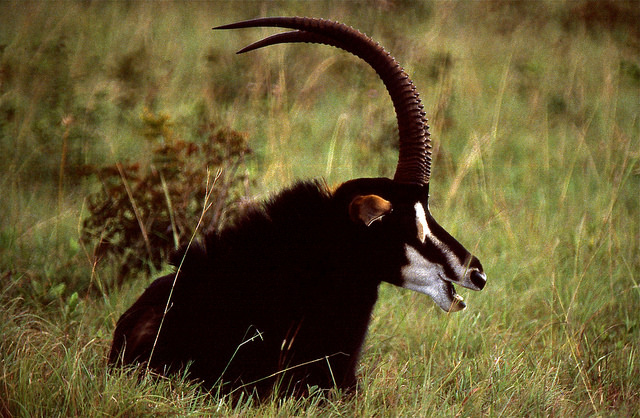
Courtesy of Bernard DuPont/Flickr.com
Roosevelt Sable
Also found roaming the wilds of Kenya, Roosevelt Sables are sadly hunted for their powerful-looking horns. With the antlers shaped similar like a grim reaper’s scythes, the sables use their razor sharp horns to defend themselves when threatened by a predator. The horns have been so useful in protecting them that many predators (like lions) have died after being impaled by them.
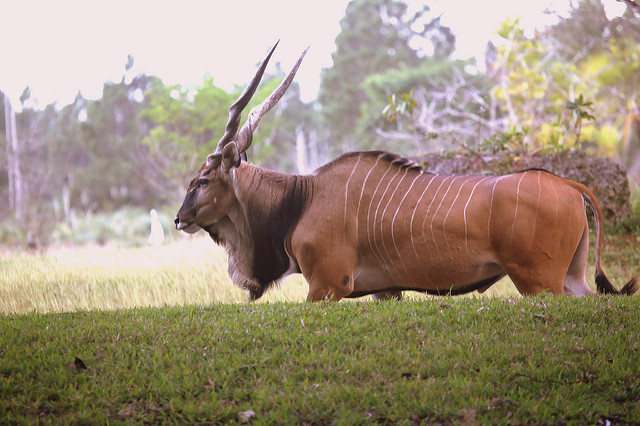
Courtesy of cuatrok77/Flickr.com
Giant Elands
Their horns aren’t the only thing that will make your jaws drop. Giant Elands earned their name by their over-sized stature. In fact, they’re the largest antelope on the planet, and have more of the body of a horse than your average deer. Giant Elands have gorgeous horns that stick straight up in spirals. It’s easy to differentiate between males and females as male elands have thicker v-shaped horns. They can be found in multiple African countries like the Democratic Republic of the Congo, Cameroon, Chad, Mali and more.
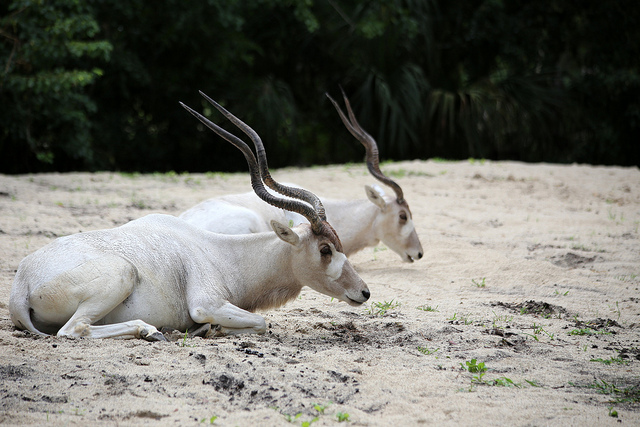
Courtesy of cuatrok77/Flickr.com
Addax
They look like they’re battling serious neck pain don’t they? Addaxes are spotted for their light gray-ish and white coats and of course, their incredibly heavy horns. Sadly, the horns do not work to their advantage like the sable. Instead, the horns are so heavy that they slow them down when they try to escape from predators. The addax is on the critically endangered species list, but there are efforts to save them by introducing them into the wilds of Morocco and Tunisia where they are less susceptible to predators. They are native to Niger and Chad.
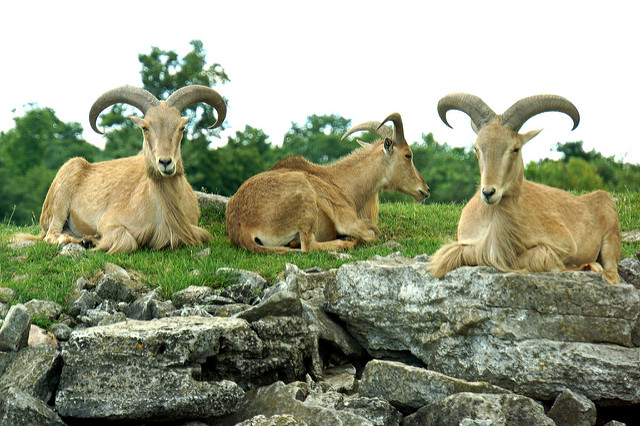
Courtesy of Dennis Jarvis/Flickr.com
Barbary Sheep
What? You mean they aren’t goats? Well they are considered goat-antelopes and live in the rocky mountains of northern Africa like Morocco, Algeria and Tunisia. Barbary Sheep are nomadic and will migrate to where they can find water and feel less threatened by potential predators. Unlike rams, their horns are more outwards and triangle-shaped, giving them their own signature look.
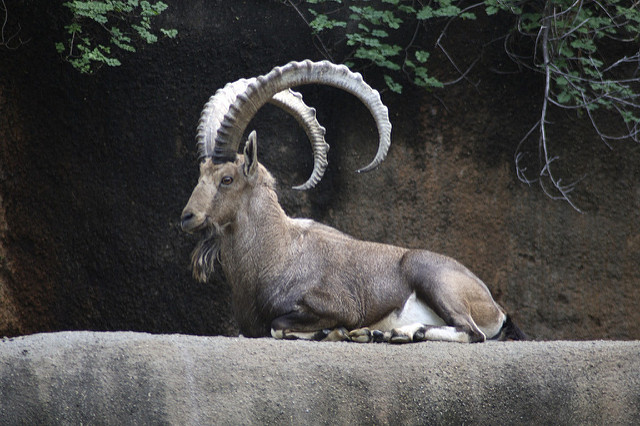
Courtesy of Jean/Flickr.com
Nubian Ibex
The horns on these mountain-dwelling goats are no joke. They can be found in mountainous areas like Algeria and Ethiopia. Females have thinner, petite horns while males have the monolithic curved-back horns (pictured) that benefits them when they battle other goats.

Courtesy of Pius Mahimbi/Flickr.com
Impala
Found in Eastern and Southern Africa, the impala is one of the most common antelopes to spot on the continent. If you seen a horned impala, it’s a male since female impalas cannot grow their own. The signature spiral shape of its horns are curved in a way that can allow the male to physically throw off their enemies. The horns are shaped to cradle any threatening predators or competitors and are conveniently placed in the forefront of the impala’s skull to protect them during fights.
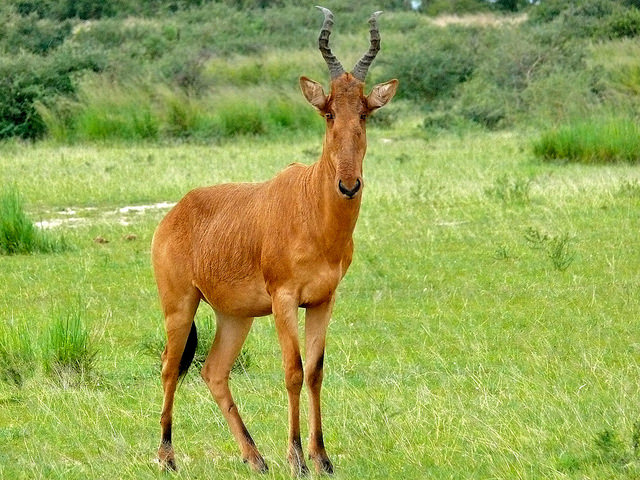
Courtesy of Bernard DUPONT/Flickr.com
Lelwel Hartebeest
Try looking past its goofy mug and his elongated skull to admire its horns. Lelwel Hartebeest is selected on this list for its seemingly un-proportionate horns for its large body. It’s almost as if it was trying on a hat that’s too small for its head and everyone is too polite to tell it that it doesn’t really fit. They can be found grazing in Uganda, Kenya, Chad, Democratic Republic of the Congo, Sudan, Tanzania and more.
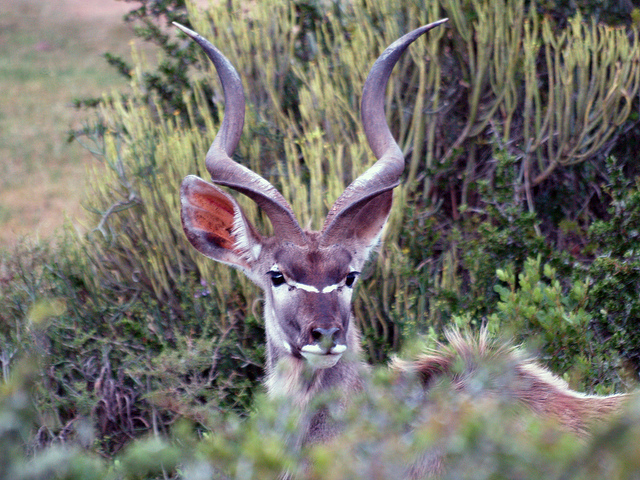
Courtesy of Chris Hills/Flickr.com
Kudu
Kudus are popular as jerky and biltong in Africa. However, when seeing them in their natural atmosphere, tourists are taken back by this striking animal with bold, spiral horns. Just by looking at their horns, you’d think the Kudu will use it to his advantage by impaling his attackers. A kudu is actually easily frightened and will dart for the hills before taking its chances in a battle. But if given no other choice, the kudu will slam its horns sideways against the predator rather than impale it.
More from AFKTravel:
The 15 Best Wildlife Parks In East Africa
Top Wildlife To Look For In Etosha National Park
Where To Have The Best Wildlife Experiences In Africa

